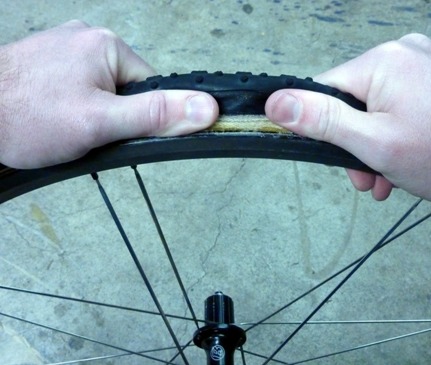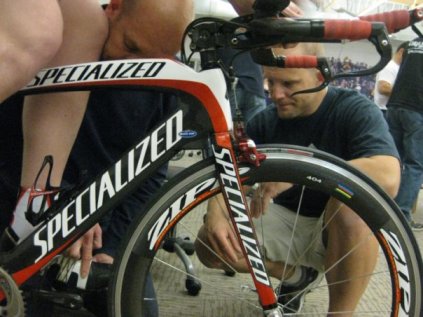GUILTY OF NEGLECT?
Nick Legan; former Pro Tour mechanic for Team RadioShack, et. al. and a tech writer for velonews.com recently made a great comment in answer to one of the questions from his Ask Nick column. He said:
“…it amazes me how much attention bike racers will give their training, their nutrition and their pre-race routine while ignoring a major part of the equation: their bikes!
What makes a pro team mechanic a pro team mechanic is actually very repetitive in nature: inspection. By paying daily attention to a bike, a good mechanic can prevent virtually all on-the-road problems. ”
While many of us long for the meticulous care of having a pro team mechanic maintain our machines; what we don’t realize is that the biggest difference – systematic inspection – is something that is easy for us to do ourselves. Here I will outline for you the steps that I take after a ride in my quick little inspection to hopefully give you a framework for your own routine. You are more than welcome to use mine, of course.
This routine is meant to be pretty brief – because I know I’m tired after a ride and usually ready to take a shower and start recovery; and I’m sure you’re probably like me in that respect. So these steps shouldn’t require a lot of time and should allow you to put the bike away and get on with your day pretty quickly.
First – go through your mental checklist: If you’re like me; when there is something wrong with my bike that I notice on a ride, it nags me until I get home. Whatever it is: the dragging rear brake cable; rattling valve stem; slow-to-shift derailleur; or loose headset, now is the time to address it. Get to your work area, grab the appropriate tools, and take care of it. You’ll get on the road sooner and safer next time (if you remember to address it at all before that ride…)
Next – Lubricate your Chain: I go into this in depth in my Bike Mistakes Part 2.5 post; so head there next for some tips and recommendations. But now is the best time to do this for a few reasons; among them: a) it helps clean the newly acquired grit off your chain before it really gets stuck to it b) allows the lubricant time to dry or set up so that you and your bike stay cleaner on your next ride and c) gets this necessary task out of the way so you get your ride started sooner next time. You should be doing it anyway – so get in the habit, do it now, and have a cleaner bike in the long run.
Check your tires for cuts, nicks, and wear: a quick but purposeful spin of the front and rear wheels gets you a good visual inspection to see where staples, glass, or small sharp rocks may be stuck in your tires or where you may have cuts. You’ll often be surprised too where a tire that appeared to be good before the ride has now worn through to the casing (the cloth body of the tire which is under the rubber). For more photos and tips on this specifically; check my post on Worn Tires and Flatting.
Optional: Give it a quick wipe-down: If it’s gotten a little wet, muddy, dirty, dusty or otherwise undesirable – run a rag over it really quick. If you’re feeling industrious; squirt some Pedro’s Bike Lust, ProGold Carbon Care or similar bike polish on it for added shine. You’ll be surprised how much road grime builds up over the course of one ride or a trip down the highway on the roof rack. Wipe it off and your bike will look more like new – which; let’s be honest, will make you more excited about riding it again ( I think I’m going to go wipe my bikes down now…be right back…)
Finally; hang it up: or place it wherever you put your bikes to rest.
Unless I’ve had a particularly difficult adjustment to make on the first step; I’d say this takes me less than 5 minutes most of the time and makes a load of difference on the subsequent rides and when it’s time for an overhaul. My bike is cleaner, quieter, easier to work on and needs less attention. All good things.
Of course; there are times – say after a muddy mountain bike ride or particularly wet or sloppy rain ride or cyclocross race – that your bike will need more cleaning and care. That’s another post for another day; but not to be neglected. A clean bike is a happy bike so take your time and do it right (which means: don’t use pressurized water…)
Do you see anything missing or have a different way of doing things? Share in the comments section so we can all learn from each other.


